
23 February 2022
Back in Pittsburgh since Monday night, I’m getting reacquainted with the Eastern Time Zone and sorting through the few cellphone photos I took during the San Diego Bird Festival.
The festival lived up to its rating as one of the Top 10 Bird Festivals in the US. It is very well run with convenient accommodations, excellent bird guides and great birds! By the end of the festival I’d seen 155 species and 6 Life Birds (more to come when all the eBird lists get in). My Life Birds were:
- Clark’s grebe,
- Allen’s hummingbird (can’t believe I missed this bird nine years ago),
- Pink-footed shearwater,
- Red-masked parakeet,
- California gnatcatcher,
- Swinhoe’s white-eye.
I also saw some bird behavior I didn’t expect. The black-crowned night-herons at Lindo Lake stayed awake during the day in order to feast on food thrown down for the ducks. Above, two waited on the chain link fence for the handouts to arrive. When the food came the night-herons walked among the pigeons.
How many black-crowned night-herons can you count in this photo?
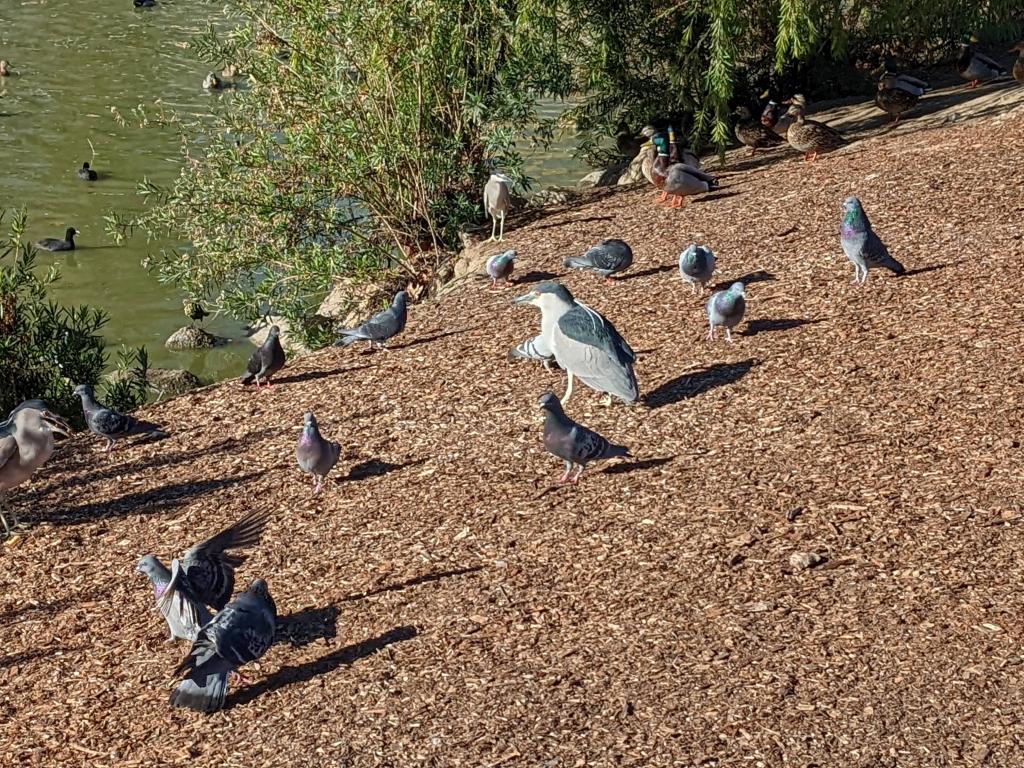
Our next stop brought us to scrubland within sight of El Cajon Mountain(*) where we heard California gnatcathers and watched a peregrine pump past us on its way west.
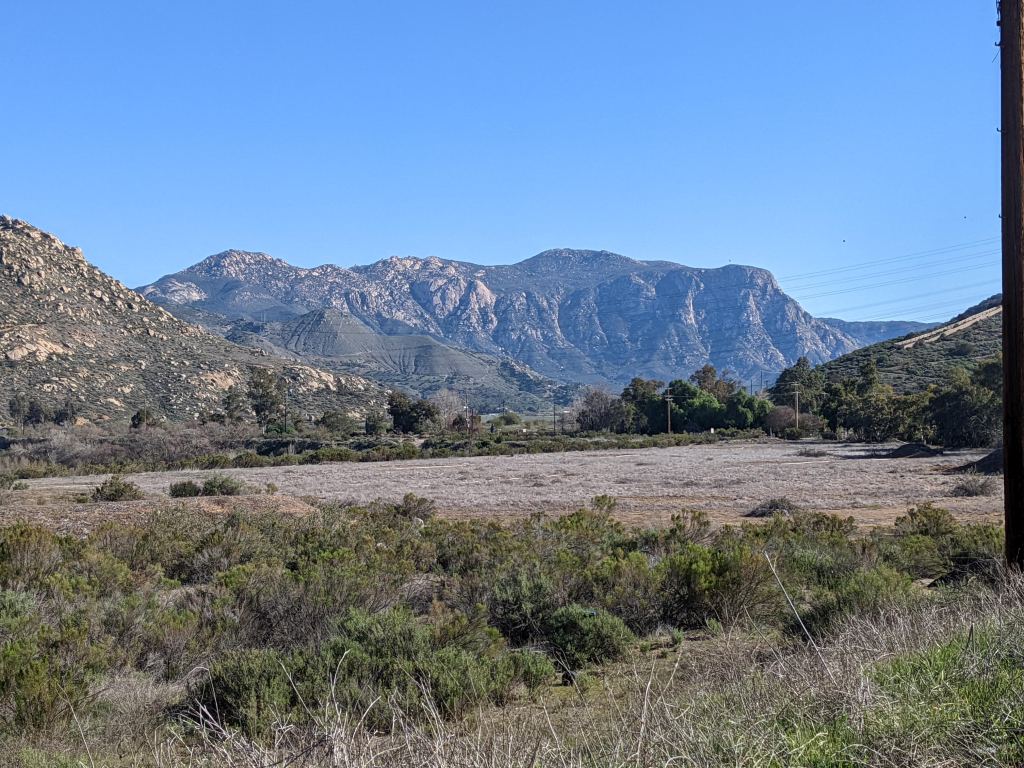
At El Monte County Park at the base of El Cajon(*) our guides showed us a great-horned owl roosting (digiscoped below) and a golden eagle near its nest on the mountain more than a mile away. (*If I have misnamed this mountain, please let me know.)
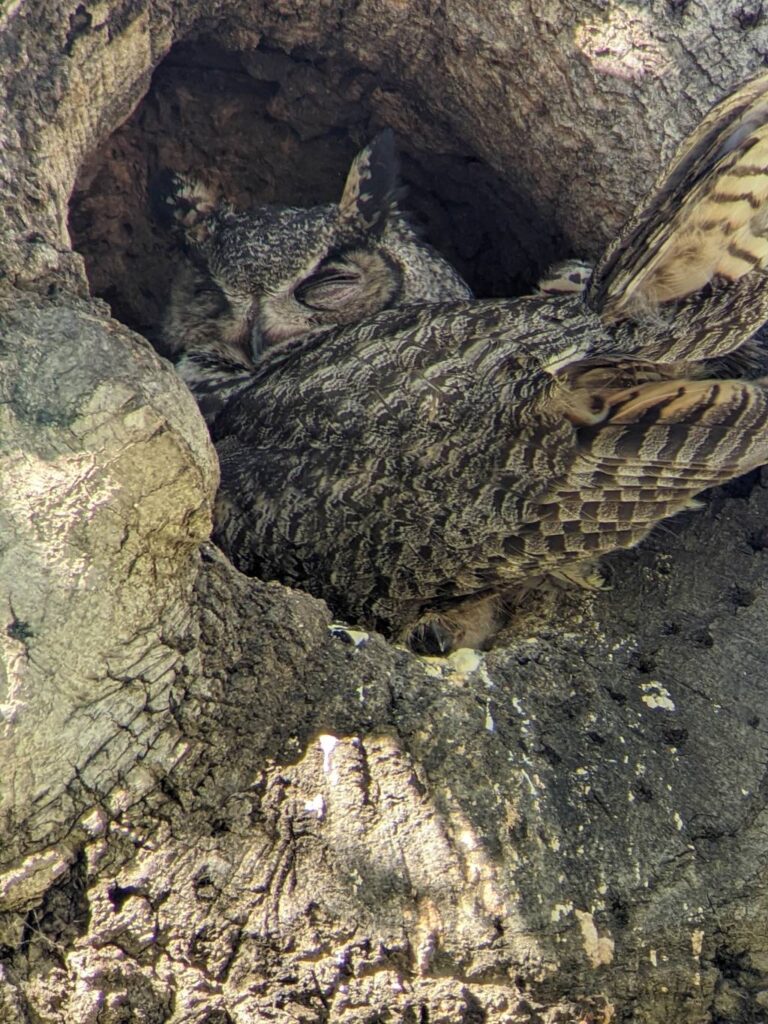
While in the Tijuana River Valley on Saturday some flowers and fruits caught my eye. I didn’t know what they were until Janet Campagna and Dianne Machesney helped out.
The first two plants can only be found in southern California and Baja California. The first is lemonade berry (Rhus integrifolia), a member of the sumac genus native to coastal chaparral from Santa Barbara County to northern Baja California. Most sumacs have compound leaves. This one is odd for having simple leaves.
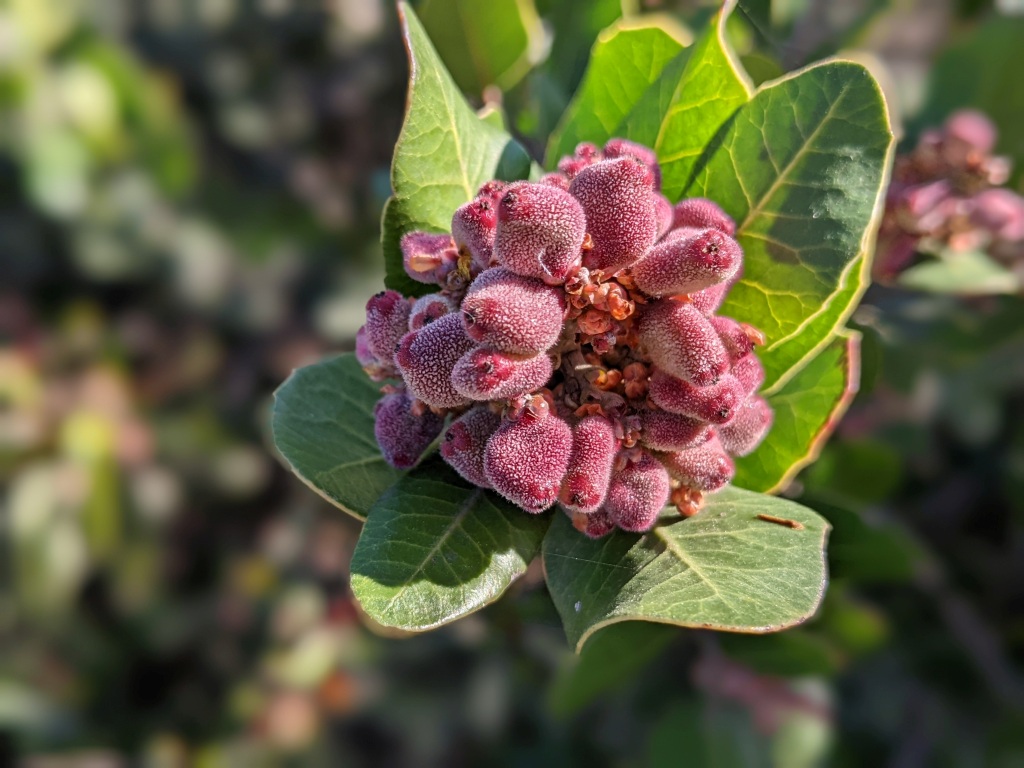
The golden-spined cereus (Bergerocactus emoryi), below, has such a limited range in Baja California, Santa Catalina Island, San Clemente Island, and San Diego that is listed “at risk” of disappearing due to habitat loss and climate change.
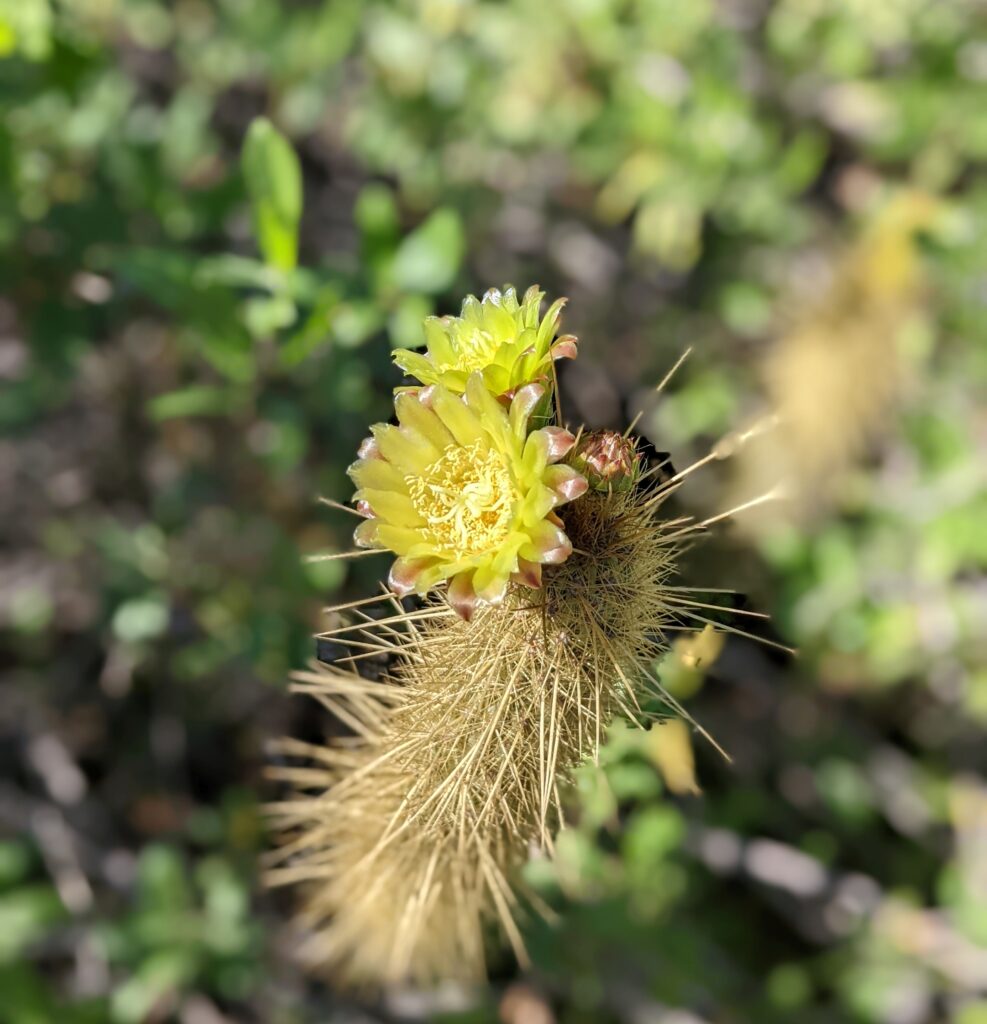
Sticky monkey-flower (Diplacus aurantiacus), below, is found in southwestern North America. Though it has a similar common name it is not in the same genus as our Allegheny monkey flower (Mimulus ringens) in Pennsylvania (see our plant photo here).
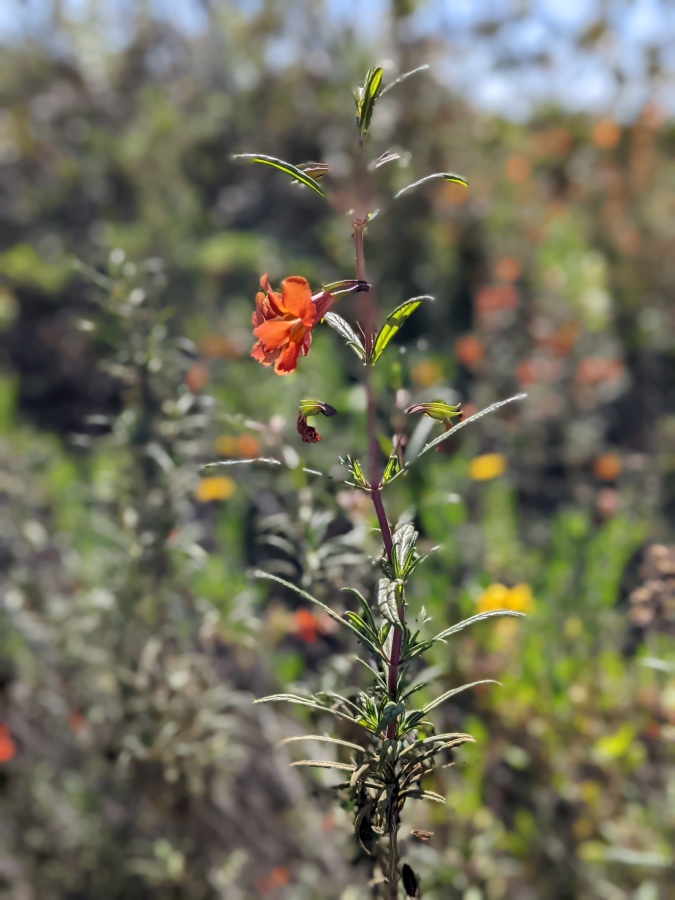
On 16 February I took a quick walk on the beach and discovered that only one gull in this group can be found in western Pennsylvania. The black-backed gulls are western gulls. The gray-backed are California gulls. There is a Heerman’s gull in there and one ring-billed gull. Our bird guides explained that ring-billed gulls prefer to stay inland in San Diego.
On Monday I said goodbye to sunny San Diego. During my trip to California there was not enough time for an outing to the pine forest mountains. I’ll have to go back!
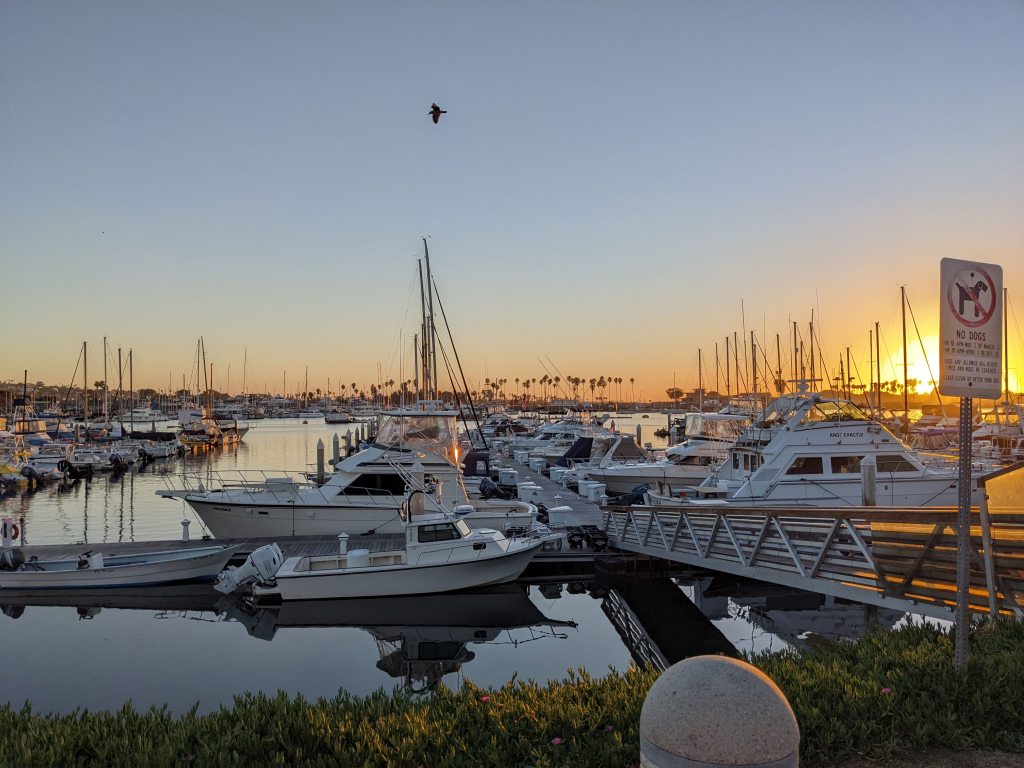
(photos by Kate St. John)
The second flower is golden spined cereus, I think.
Thank you, Dianne.
The first flower looks like lemonade berry to me. Sorry I missed the bird festival, but as stroke victims go, I was “lucky”. Lol
Thanks, Janet, for the plant identification. Glad to hear you’re on the mend.
Did you get to see the Golden Eagle?
Yes, we saw the golden eagle from a great distance, flying near the nest.
It looks like you had an amazing trip Kate, wonderful! Glad you are home safe and sound. Thanks for the updates along the way.
Kate:
With regard to your question about the naming.. El Cajon Mountain is the high point of a large block of granite that rises up above the town of El Cajon. In addition to some spectacular formations on some of the lesser peaks on the mountain, the south face of El Cajon Mountain drops in a nearly sheer cliff, exposing a solid granite wall resembling Yosemite’s El Capitan. For that reason, the mountain is commonly referred to as El Capitan Mountain, or simply El Cap.
Glad you had a swell trip in my home!
KING (San Diego)
KING, it looks like El Monte County Park faces El Cajon — or El Cap — but the peak cannot be seen from the valley.
You had a great day. It is surprising to see so many black-headed night herons appear at one time. I’m also curious about the eagle that I saw, it would be nice if we had a picture of it. And how about the Great Horned Owl didn’t it wake up when you took it at such close range?